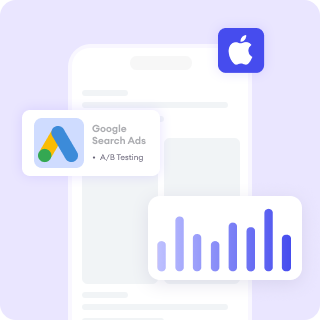Private Marketplaces (PMPs) offer advertisers exclusive access to premium ad inventory, enabling precise audience targeting and greater brand safety. However, the process of gaining access and understanding the associated costs can be daunting for newcomers. This article will guide you through the simplest ways to enter a PMP and break down the typical costs involved.
Easiest Ways To Gain Access to Private Marketplaces (PMP)
If you’re looking to streamline the process of gaining PMP access, here are the most straightforward methods:
1. Partner with a Media Agency
Media agencies are an excellent starting point for PMP access. These agencies often have established relationships with publishers and platforms, enabling them to secure deals more easily. Here’s why this works:
- Pre-Negotiated Deals: Agencies frequently have access to premium inventory through long-standing publisher partnerships.
- Expertise: They handle all the technical details, including setup, optimization, and performance tracking.
- Leverage: Agencies can negotiate better pricing due to their volume of business.
Partnering with an agency saves time and simplifies the process, especially for advertisers unfamiliar with PMP operations.
2. Use a PMP-Enabled DSP
Demand-Side Platforms (DSPs) make accessing PMPs easier with built-in features and direct connections to premium publishers. Some popular DSPs include The Trade Desk, Google DV360, and MediaMath.
- Advantages: DSPs often offer pre-configured PMP deals, allowing advertisers to select options with minimal setup.
- Support: Most DSPs provide account managers to help you navigate PMP campaigns.
By choosing a DSP with strong PMP integrations, you can quickly launch campaigns in a premium environment.
3. Use Publisher Marketplaces
Some publishers provide self-serve or semi-managed PMP solutions directly through their platforms, such as Google Ad Manager, Magnite, or PubMatic. These tools allow you to:
- Explore and initiate PMP deals without intermediaries.
- Connect directly with publishers for inventory negotiations.
This method is particularly effective for advertisers who already have a clear idea of the inventory they want.
4. Tap into Existing Relationships
If you have established connections with publishers, use those relationships to discuss PMP opportunities. Publishers are often open to direct partnerships with trusted advertisers, making this a low-barrier way to gain access.
How Much Does PMP Access Cost?
While PMPs offer premium benefits, they also come with higher costs than open marketplaces. Below are the typical cost components:
1. CPM Rates
The Cost Per Thousand Impressions (CPM) in a PMP is higher due to the exclusive and high-quality nature of the inventory.
- Standard Display Ads: $10–$30 CPM
- High-Impact Formats (e.g., Video): $30–$100+ CPM
- Connected TV (CTV) or Exclusive Audiences: $100+ CPM
2. Minimum Spend Requirements
Publishers often require a minimum monthly spend to participate in PMP deals.
- Entry-Level Publishers: $5,000–$10,000 per month
- Top-Tier Publishers: $20,000+ per month
Minimum spends ensure publishers allocate premium inventory to serious advertisers.
3. DSP and Platform Fees
When accessing PMPs via DSPs, you’ll encounter additional fees:
- Technology Fees: DSPs charge 10–15% of your media spend.
- Service Fees: For managed campaigns, some DSPs add flat fees or percentages of the total spend.
4. Creative Costs
PMP campaigns often require polished, high-quality creatives to align with premium publisher standards.
- Basic Creatives: $1,000–$5,000
- Custom Creatives: $5,000–$10,000+
Investing in quality assets ensures your ads perform well in competitive environments.
What to Expect Overall
For most advertisers, a mid-level PMP campaign requires a total budget of $15,000–$50,000 per month, including inventory costs, platform fees, and creative expenses. If targeting ultra-premium inventory or niche audiences, the budget could exceed this range.
Average Fees by Brand and Platform
Below is a list of popular DSPs, publishers, and platforms involved in PMP deals, along with their average costs:
|
Brand/Company |
Description |
Average Fees/Costs |
|
The Trade Desk |
Leading DSP with extensive PMP capabilities. |
10–15% of media spend; $20,000+ minimum spend recommended. |
|
Google DV360 |
Google’s enterprise DSP for premium access. |
$15–25 CPM; $10,000+ monthly spend. |
|
MediaMath |
DSP specializing in programmatic advertising. |
15% tech fee; $5,000–$10,000 monthly minimum. |
|
Magnite |
Premium SSP for video and CTV inventory. |
$30–$60 CPM for video; $100+ CPM for CTV. |
|
PubMatic |
SSP offering programmatic PMP access. |
$15–$50 CPM depending on format and audience. |
|
OpenX |
Premium exchange with direct PMP access. |
$10–$40 CPM for display; $25–$75 for video. |
|
Hulu (via SSPs) |
Premium connected TV inventory. |
$35–$125+ CPM depending on targeting and exclusivity. |
|
New York Times |
Publisher offering exclusive PMP deals. |
$20–$50 CPM for display; $50–$100+ CPM for rich media. |
|
Hearst Digital Media |
Premium magazine publisher. |
$15–$40 CPM for standard formats; $50–$75 for custom placements. |
|
Roku (via OneView) |
Connected TV platform offering PMP deals. |
$25–$100 CPM based on targeting options. |
Conclusion
Accessing a Private Marketplace doesn’t have to be complicated or prohibitively expensive if you take the right approach. Partnering with media agencies, using DSPs with pre-configured PMP deals, or leveraging direct publisher marketplaces are some of the easiest ways to get started.
While costs are higher than open exchanges, the premium inventory and targeted reach often justify the investment.
By understanding these pathways and budgeting appropriately, you can unlock the benefits of PMP advertising with ease.
Contact FoxAdvert Today!
If you're looking for a reliable partner to help you navigate and optimize your ad campaign strategy, FoxAdvert is the service provider you need! Contact us today 😊











